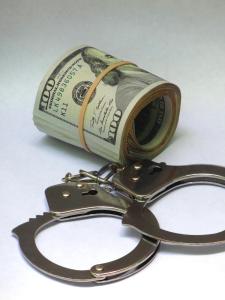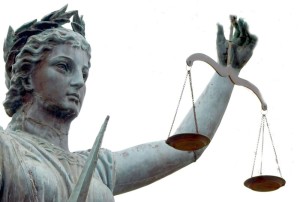By Karon Fowler
Yesterday, the Fourth Circuit rejected the arguments of Appellant Khalil Blackman regarding the insufficiency of the evidence supporting his conviction based on thePinkerton doctrine. As to the government’s cross-appeal, the Circuit reversed the trial court’s forfeiture ruling and remanded the case with directions to enter a forfeiture money judgment pursuant to the decision. The full opinion can be found here.
Blackman was part of a conspiracy to commit armed robbery with Mark IV Transportation & Logistics, a transportation contractor for Apple, as the target. As a result of his involvement in the crimes, Blackman was indicted on two counts: one count of conspiring to commit robbery and one count of violating 18 U.S.C. §§ 924(c) and 2, which prohibit use or carry of a firearm during and in relation to a crime of violence. The indictment also included a forfeiture notice. Blackman was convicted on both counts and in addition to a prison sentence, the court ordered $136,601.03 in restitution, jointly and severally with Blackman’s co-conspirators, based on an appraisal of the value of the stolen goods. However, the court rejected the government’s request for forfeiture in the same count and later denied the government’s motion to amend the sentence to include a forfeiture order.
As his primary argument on appeal, Blackman contended that the district court’s reliance on the infamous Pinkerton v. United States as a basis of conviction was inappropriate because the case was not mentioned in the indictment. The Pinkertondoctrine states that a defendant is “liable for substantive offenses committed by a co-conspirator when their commission is reasonably foreseeable and in furtherance of the conspiracy.” The doctrine is founded on an agency theory, holding conspirators responsible for each other’s behavior. The Fourth Circuit refers specifically to one of its own cases, United States v. Ashley, 606 F.3d 135, 142-43 (4th Cir. 2010), to explain that the Pinkerton doctrine need not be charged in an indictment for it to later act as the legal basis for the defendant’s conviction.
The court concluded that the prosecution’s evidence was plainly sufficient to support Blackman’s conviction under Pinkerton for brandishing a firearm during and in relation to a crime of violence. Although Blackman was not present for each robbery, his co-conspirators testified that he was involved in pre-robbery discussions that expressly referred to use of a firearm. Blackman also played a substantial role in the commission of the crime, acting as the “fence” for the stolen goods. Because Blackman joined the alleged conspiracy and it was reasonably foreseeable and in furtherance of the goals to use a firearm, the evidence was sufficient to uphold his conviction.
The government, on cross-appeal, challenged the district judge’s rejection of the prosecution’s forfeiture request at sentencing without explanation. At the hearing on the government’s motion to correct sentence, the court seemingly based its denial of the motion on the fact that Blackman lacked necessary assets to satisfy the forfeiture judgment.
Upon examination of the relevant statutes, the court concludes that the forfeiture statute’s plain language indicates forfeiture is not a discretionary element of sentencing. Instead, the statute mandates that forfeiture be imposed when the relevant prerequisites are satisfied. Thus, the district court could not withhold forfeiture on any notion of equitable considerations. That a defendant is indigent or otherwise lacks adequate assets to satisfy a judgment does not bar a forfeiture order. The court explained that a conclusion to the contrary would allow defendants to avoid forfeiture by simply spending down their illegitimate gains before sentencing.
Blackman argued that a forfeiture order against him would violate the Eight Amendment, which bars the government from collective excessive fines as punishment for an offense. However, the court concluded that his claim failed to satisfy the criteria for violation of the Excessive Fines Clause as set forth in United States v. Jalaram. The four factors that courts must consider in the Fourth Circuit are (1) “the amount of the forfeiture and its relationship to the authorized penalty;” (2) “the nature and extent of the criminal activity;” (3) “the relationship between the crime charged and other crimes;” and (4) “the harm caused by the charged crime.” United States v. Jalaram, 599 F.3d 347, 355-56 (4th Cir. 2010). In Blackman’s case, the requested forfeiture remained well below the maximum statutory fine, Blackman served the crucial function in the conspiracy of enabling the disposing of its loot, and the crime caused significant harm by depriving Apple of its delivered products and damaging Mark IV’s business. Thus, the imposition of the forfeiture order would not present an Eighth Amendment problem.



